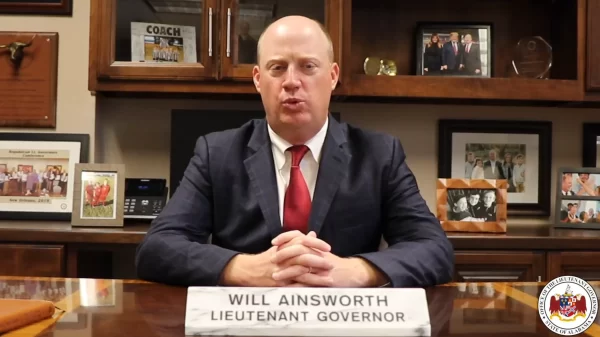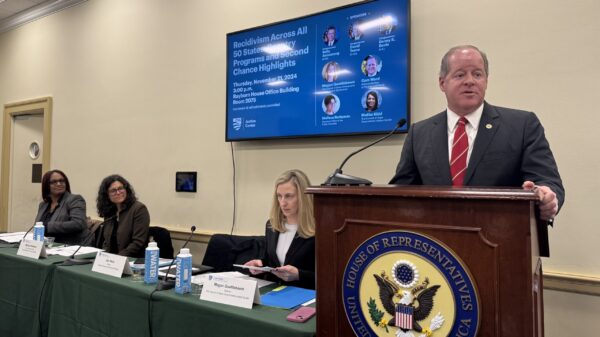Natural disasters made more severe and more frequent by climate change are endangering 11 superfund sites in Alabama, according to a report released Monday by the U.S. government.
The report by the U.S. Government Accountability Office urges the Environmental Protection Agency to take action to protect more than 900 superfund sites across the country from the impacts of flooding, wildfires and sea level rise which are exacerbated by climate change.
Of the 1,500 superfund sites across the country almost 60 percent, or more than 900, are under threat from the impacts of climate change, according to the report titled “EPA Should take Additional Actions to Manage Risks of Climate Change.”
“Climate change may increase the frequency and intensity of certain natural disasters, which could damage Superfund sites—the nation’s most contaminated hazardous waste sites,” the report reads. “…We found that EPA has taken some actions to manage risks at these sites. However, we recommend it provide direction on integrating climate information into site-level decision making to ensure long-term protection of human health and the environment.”
The EPA has listed more than 500 contaminants at the National Priority List (NPL) sites, including arsenic and lead. The report notes that climate change may make some natural disasters more frequent or more intense “which may damage NPL sites and potentially release contaminants, according to the Fourth National Climate Assessment.”
In 2017 Congress asked the U.S. GAO office to conduct a study to determine which of those sites were in danger of being impacted by climate change, which resulted in the report. The EPA has already pushed back on aspects of the report, however, a signal of the Trump administration’s continuing rejection of calls for action on climate change.
“The EPA strongly believes the Superfund program’s existing processes and resources adequately ensure that risks and any effects of severe weather events, that may increase in intensity, duration, or frequency, are woven into risk response decisions at non-federal [National Priorities List] sites,” said EPA Assistant Administrator Peter Wright said in a statement Monday.
The GAO report notes that while four of the 10 regions overseen by the EPA across the country do use climate change projections when assessing dangers for superfund sites, “EPA officials have not consistently incorporated climate change information into their assessment of site-level risks because they do not always have the climate data they need to do so, according to our review of EPA documents and interviews with EPA officials and stakeholders.”
Alabama resides in the EPA’s region 4, an area for which the EPA says it doesn’t have enough data to accurately predict how climate change might endanger those superfund sites, the report found, and an area that the EPA does not use future predictions in doing so.
“The Region 4 climate change adaptation implementation plan, for instance, noted that preliminary assessments and site investigations are typically based on historic information, not future projections and therefore may not fully address risks,” the report reads. “Region 4 study of the vulnerability of NPL sites stated that climate model projections of temperature and precipitation patterns are not available at a spatial resolution that is useful for assessing vulnerabilities at the site level.”
APR’s message to the Alabama Department of Environmental Management, which works with the EPA to safeguard those toxic sites, on Thursday for comment on the report went unanswered.
Among the report’s recommendations to the EPA are:
The Director of the Office of Superfund Remediation and Technology Innovation should establish a schedule for standardizing and improving information on the boundaries of nonfederal NPL sites.
The Administrator of EPA should clarify how EPA’s actions to manage risks to human health and the environment from the potential impacts of climate change effects at nonfederal NPL sites align with the agency’s current goals and objectives.
The Director of the Office of Superfund Remediation and Technology Innovation should provide direction on how to integrate information on the potential impacts of climate change effects into risk assessments at nonfederal NPL sites.
The Director of the Office of Superfund Remediation and Technology Innovation should provide direction on how to integrate information on the potential impacts of climate change effects into risk response decisions at nonfederal NPL sites.
Alabama’s superfund sites deemed in danger by natural disasters made more frequent and severe by climate change are:
Site name: TRIANA/TENNESSEE RIVER
Location: LIMESTONE/MORGAN, AL
In an area potentially impacted by: highest flood hazard
Site name: INTERSTATE LEAD CO. (ILCO)
Location: LEEDS, AL
In an area potentially impacted by: highest flood hazard
Site name: ALABAMA PLATING COMPANY, INC.
Location: VINCENT, AL
In an area potentially impacted by: high wildfire hazard potential, highest flood hazard
Site name: T.H. AGRICULTURE & NUTRITION CO. (MONTGOMERY PLANT)
Location: MONTGOMERY, AL
In an area potentially impacted by: moderate or other flood hazards
Site name: MOWBRAY ENGINEERING CO.
Location: GREENVILLE, AL
In an area potentially impacted by: highest flood hazard
Site name: OLIN CORP. (MCINTOSH PLANT)
Location: MCINTOSH, AL
In an area potentially impacted by: high wildfire hazard potential, highest flood hazard
Site name: CIBA-GEIGY CORP. (MCINTOSH PLANT)
Location: MCINTOSH, AL
In an area potentially impacted by: high wildfire hazard potential, highest flood hazard
Site name: STAUFFER CHEMICAL CO. (LEMOYNE PLANT)
Location: AXIS, AL
In an area potentially impacted by: high wildfire hazard potential
Site name: PERDIDO GROUND WATER CONTAMINATION
Location: PERDIDO, AL
In an area potentially impacted by: high wildfire hazard potential
Site name: REDWING CARRIERS, INC. (SARALAND)
Location: SARALAND, AL
In an area potentially impacted by: high wildfire hazard potential, a maximum intensity (Category 4 or 5) hurricane, moderate or other flood hazards
Site name: AMERICAN BRASS INC.
Location: HEADLAND, AL
In an area potentially impacted by: No hazard identified (includes unknown)























































